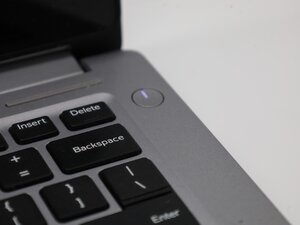crwdns2862637:0crwdne2862637:0
crwdns2869081:0crwdne2869081:0
Understanding Error Codes
Dell firmware has a streamlined diagnostic system through the use of error codes.
Error codes can be deciphered by the flashing LED light on the power button. Each error code is represented by a sequence of blinking amber and white lights. To find your error code, count how many blinks of each color the laptop presents- beginning with amber, then white. For example Error "2,1" means two amber blinks followed by one white blink. You can find Dell's diagnostic chart here.
System Board Errors
These error codes indicate a problem with the device's motherboard. To address these issues, its important to ensure the integrity of the data on the motherboard. To get the correct files, find them on the Dell website and force a BIOS flash.
If this does not work, a motherboard replacement is required.
Memory Faults
Occasionally, the system memory may become dislodged from its contact point, causing a loss of connection with the motherboard. To correct this error, follow the following tutorial (hyperlinked) to reseat the RAM. If the laptop still displays the error, inspect the connector for damage or debris. If there is none, RAM replacement is required.
LCD Failure
Error Code 2,7 indicates there is a critical issue with the device's screen. There is a chance the connector may have come loose, if this is the case, reseat the screen connector. If this does not solve the issue, the screen will require replacement.
LCD Power Rail Failure
There are various chips on the main board that supply the LCD screen with power and data. It will require replacement.
CMOS Battery Failure
On the main board, there is a small coin battery that is in place to ensure the motherboard gets consistent power. This power helps motherboard settings stay applied. Without it, settings will be reset upon every restart. In order to correct the error, replace the battery with an appropriate CR2032 CMOS coin battery.


crwdns2944067:00crwdne2944067:0